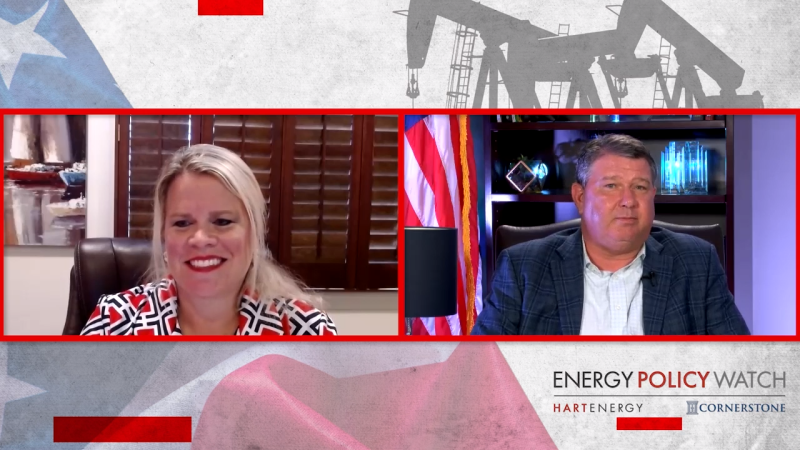
McKinley and Schrader have proposed an alternative clean energy that would set a clean electricity standard targeting an 80% reduction in power sector carbon emissions by 2050. (Source: Photo collage by Hart Energy; images from Shutterstock.com)
We’ve heard so much about bipartisanship or lack-thereof lately, especially with the latest Congressional action on the budget and infrastructure.
The infrastructure legislation passed by the Senate last month shows that bipartisanship is alive and well.
Now, we must deal with climate change the same way, rather than stuffing a bulky climate agenda through on a partisan vote using the budgetary process—the route the Democratic leadership has chosen to pursue its plans for cutting power sector emissions.
And we can do it. Just look at us: a Republican engineer from West Virginia and a Democratic veterinarian from Oregon. Yet, despite our differences, we have worked together to craft ambitious, effective and bipartisan legislation to tackle the climate crisis and promote a clean energy future.
We started with a simple scientific premise: climate change is real, and time is running out to arrest its harm. We then brought in climate experts and industry leaders to help design evidence-based solutions that would slash the carbon emitted by the power sector by 2050. The result—the Clean Energy Through Innovation Act of 2021—is the most sensible, achievable and ambitious bipartisan proposal to transform America’s power sector into an engine of clean energy growth.
For more check out the latest installment of Energy Policy Watch featuring a frank discussion on a bipartisan approach to strong energy and climate policies.

Unlike short-term parliamentary tactics, which pass bills on party-line votes, bipartisan legislation is enduring because both sides have a vested interest in its success—and long-lasting solutions are what we desperately need.
Our legislation invests in technologies we have today, to make them cleaner, more efficient and cost-effective. Similarly, it invests billions to research, develop and demonstrate the innovations that will fuel future deep decarbonization. We must commercialize new technologies such as advanced nuclear reactors, net-negative baseload cogeneration and zero-emissions carbon capture for fossil fuels.
Innovation is key, but it isn’t enough. We need an effective, market-oriented and realistic clean electricity standard that drives progress and holds power companies accountable. That’s why our bill sets a clean electricity standard that would reduce emissions from generators by 80% by 2050.
Bipartisan federal legislation is important to give businesses and financial institutions certainty to make long-term investments knowing what the rules of the road will be. Decades of lawsuits and regulatory ping-pong over climate prove this point.
We also acknowledge states where fossil fuels are the linchpin of local economies and the lifeblood for families of workers by investing in innovation and infrastructure first. Overall, this reduces costs to consumers, saves jobs, preserves fuel diversity and resilience of the grid and breaks the climate and energy policy political logjam.
Democrats and Republicans can work together to break the climate gridlock, or we can move deeper into partisan trenches as the crisis worsens, our energy infrastructure crumbles and Americans become convinced that their government is broken.
Only Congress can solve this problem. But rather than jamming climate policy through on party-line votes, we need lasting, sensible, achievable Federal legislation embodied in our approach.
To succeed, climate policy must be durable; to endure, it must be bipartisan.
U.S. Representatives David McKinley (R-WV) and Kurt Schrader (D-OR) have proposed an alternative clean energy that would set a clean electricity standard targeting an 80% reduction in power sector carbon emissions by 2050.
This article is an excerpt of Energy Source, a twice-weekly energy newsletter from the Financial Times.
Recommended Reading
BKV CEO Chris Kalnin says ‘Forgotten’ Barnett Ripe for Refracs
2024-04-02 - The Barnett Shale is “ripe for fracs” and offers opportunities to boost natural gas production to historic levels, BKV Corp. CEO and Founder Chris Kalnin said at the DUG GAS+ Conference and Expo.

